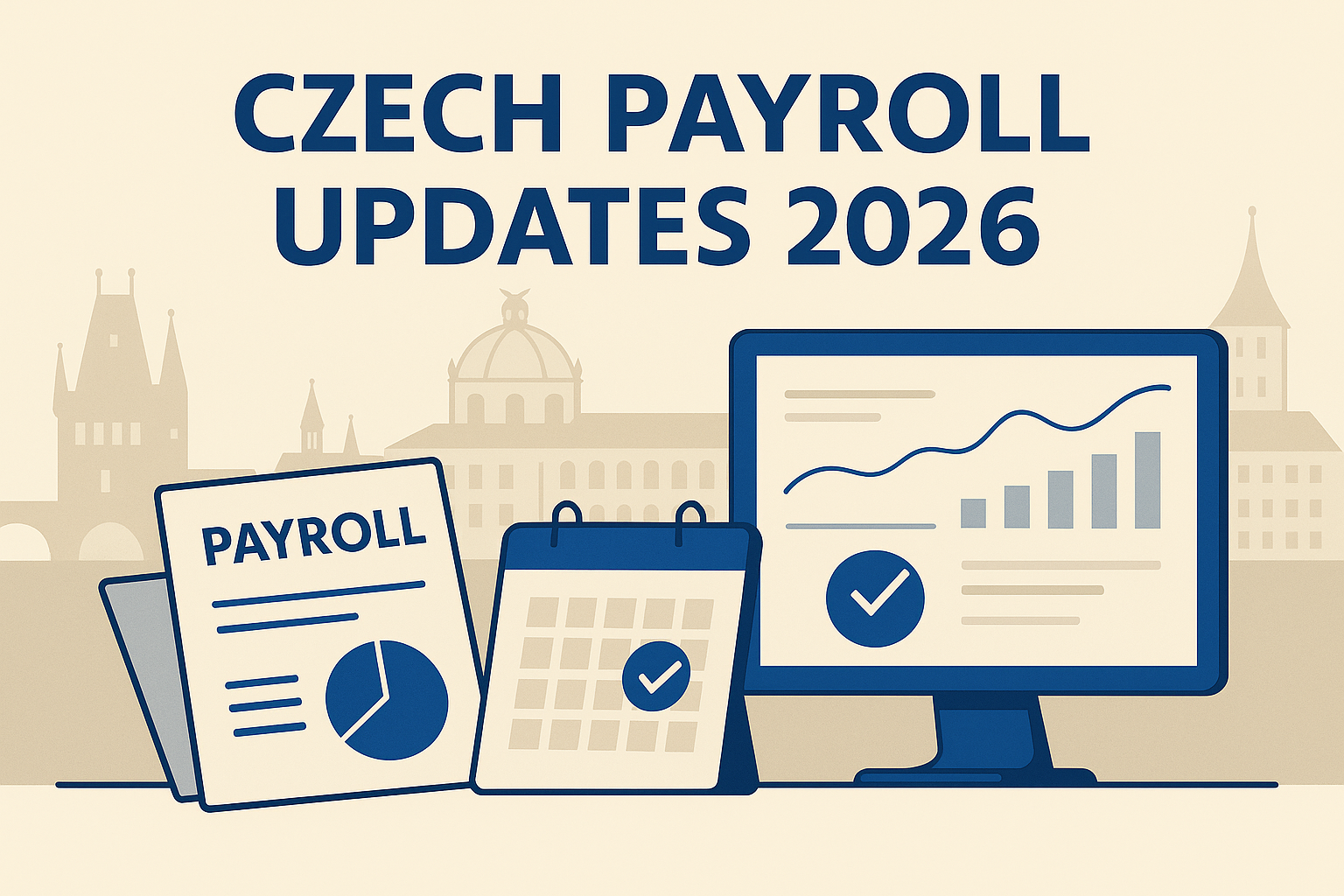1) Unified Monthly Employer Report
From 2026, employers submit one consolidated monthly report instead of multiple filings. This simplifies processes but raises the bar for accuracy, validation, and reconciliation.
2) Social Insurance & Tax Watchpoints
Before your January 2026 payroll, validate these configuration points to prevent unexpected changes in net pay or employer costs:
- Assessment-base caps: apply the Maximum Assessment Base correctly across all components.
- Health insurance minimum base: check monthly minimums and any top-up logic for under-threshold employees.
- Timing of bonuses: confirm period attribution (earning vs. payout month) to avoid distortions in averages and levies.
- DPP switching rules: ensure automatic contribution switch when the 12 000 CZK monthly earnings limit (per employer) is exceeded.
Key Figures 2026 caps & thresholds
Maximum Assessment Base (48× average wage): 2 350 416 CZK
Minimum wage: 22 400 CZK / month • 134.40 CZK / hour
DPP threshold (contributions apply): 12 000 CZK per employer / month
2a) Minimum Wage 2026 — Practical Implications
From 1 January 2026, the minimum monthly wage increases to 22 400 CZK and the hourly minimum wage to 134.40 CZK. This affects:
- Health insurance minimum base and top-ups
- Guaranteed wage levels and pay bands
- Overtime, supplements, and related premiums
- Payroll budgets and templates
2b) DPP Threshold 2026 — CZK 12 000 per Employer
From 1 Jan 2026, social and health insurance applies when an employee’s DPP earnings exceed 12 000 CZK per employer per month. Configure your system to track and switch automatically.
Need clear examples?
Download the Free Czech Payroll Basics Guide — simple explanations and sample calculations for HR and Finance teams.
Get the Free Guide →3) Mandatory Employer Pension Contribution (Category III Jobs)
From 2026, employers must contribute 4 % of salary to pension products for employees working in Category III (risk-exposed) roles.
4) EU Pay Transparency Directive
- Publish salary ranges in job ads
- Document and review internal pay bands
- Define data sets for gender pay gap reporting
5) Employee Benefits Reform 2026 — Tax & Reporting Changes
From January 2026, benefits remain tax-free only if provided on top of salary. Salary substitution benefits will be fully taxed and subject to contributions.
- Leisure benefits: up to 24 483 CZK/year
- Health & wellness benefits: up to 48 967 CZK/year
- All benefits must be reported monthly (Unified Employer Report, due April 2026 for Q1)
6) Q4 2025 Readiness Checklist
Need a detailed handbook?
Get the Czech Payroll Guide 2025 — plain-English explanations, checklists, and examples to keep payroll compliant throughout 2025 and beyond.
Open the Guide →7) Common Mistakes to Avoid
- Delaying unified-report mapping
- Missing the 12 000 CZK DPP threshold
- Ignoring new benefits limits & reporting
- Overlooking Category III tagging
Disclaimer: General guidance only — verify official rates and specifications before processing 2026 payroll.
